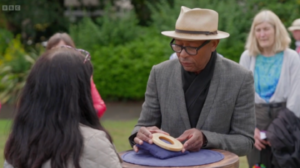In the age of instant sharing and social media virality, a single post can ignite a firestorm of public debate. This was precisely the case when reality television personality Scott Disick posted a photo of himself dining with his daughter Penelope. The seemingly innocent father-daughter moment turned controversial after followers noticed what they described as an inappropriate gesture made by the child, interpreted by many as a racial caricature. The post quickly became a hot topic online, sparking conversations about parenting, cultural sensitivity, and the burden of celebrity influence.
The Incident
Scott Disick, best known for his appearances on Keeping Up with the Kardashians, shared a snapshot of himself and Penelope on what he referred to as their “first date of the year.” The image was taken in what appeared to be an Asian restaurant. While the caption was lighthearted, many were quick to point out that Penelope was seen pulling the corners of her eyes—an act historically and widely recognized as a racist gesture mocking East Asian features.
Though it’s likely the child did not understand the implications of her action, the photo ignited immediate backlash. Social media users criticized Disick for not only failing to correct the behavior but for publicizing the image to his millions of followers. Many accused the father of negligence and insensitivity, arguing that even young children should be taught about the gravity of racial stereotypes.
The Power and Pitfalls of Social Media
Celebrity parenting in the digital age is a complicated affair. Unlike in previous generations, public figures today are constantly under the microscope, with every social media post subject to scrutiny. Disick’s post served as a reminder of how even seemingly benign moments can be interpreted in broader, sometimes damaging, contexts.
Critics contend that as a high-profile figure, Disick has a responsibility to be more mindful of the content he shares. While a private family photo might pass unnoticed in the hands of an everyday parent, celebrities operate on a much more visible and influential stage. Their choices—intentional or not—can perpetuate harmful stereotypes or, conversely, help dismantle them.
The Importance of Cultural Awareness
One of the most important lessons from this incident is the need for cultural awareness and sensitivity, even—or perhaps especially—when children are involved. The gesture made by Penelope is not new; it has long been used to mock and dehumanize people of East Asian descent. That such a gesture would appear in a public image without any acknowledgment or correction touches a raw nerve, particularly in a climate where anti-Asian hate and racism remain pressing issues globally.
This situation also raises questions about how parents, both famous and not, should navigate the topic of race and inclusion with their children. In a multicultural society, it’s imperative that kids learn from a young age what different gestures, words, and behaviors mean—and why some can be deeply hurtful. Teaching children empathy and awareness doesn’t restrict their expression; it enhances their capacity to be respectful, thoughtful global citizens.
Public Reaction: Outrage, Dialogue, and Defensiveness
The public reaction to Disick’s post was mixed but largely critical. Some fans expressed disappointment, demanding the photo be taken down and an apology issued. Others took a more lenient stance, suggesting the child’s actions were innocent and that the controversy was blown out of proportion.
Still, many experts in race relations and child development weighed in, noting that while children often mimic actions without understanding their meaning, it is the responsibility of adults—especially parents—to guide them and correct such behavior. The fact that the photo was posted without commentary or context only added to the discomfort, making many feel that the action was either overlooked or normalized.
Interestingly, there was also a notable amount of silence from Disick himself. While some celebrities respond quickly to backlash with apologies or clarifications, Disick remained quiet, letting the media storm play out without direct engagement. For some, this lack of response felt like a missed opportunity to address an important issue and turn a negative moment into a teachable one.
What This Teaches Us
At its core, this incident is not just about one celebrity post; it’s a reflection of larger societal tensions around race, privilege, and accountability. In an interconnected world, where content spreads across platforms in seconds, celebrities—like all public figures—must be hyperaware of how their actions and messages can impact different communities.
It’s also a call to action for parents everywhere. Conversations about race and respect shouldn’t be optional or reserved for when a controversy arises. Instead, they should be woven into daily life, taught early and reinforced often. Children learn not just from what they’re told but from what they see modeled around them.
Moving Forward
Scott Disick’s photo with his daughter may fade from the headlines, but the questions it raises linger. How should celebrities respond when their actions are called into question? At what age should children start learning about cultural sensitivity? And how can we, as a society, do better at balancing grace for childhood innocence with the need for accountability?
If there’s a silver lining to this controversy, it’s that it sparked a broader conversation—one that extends beyond tabloid gossip into the realm of meaningful reflection. That dialogue is the first step toward change.







